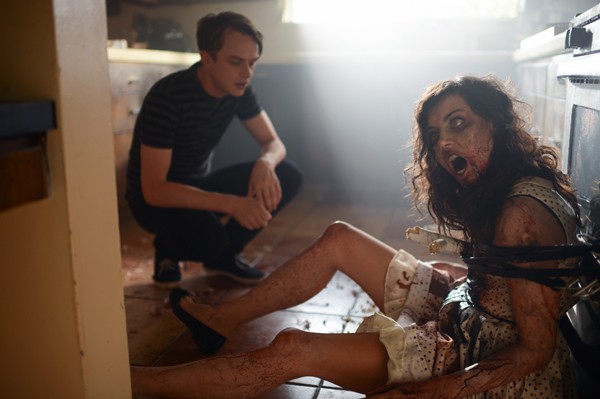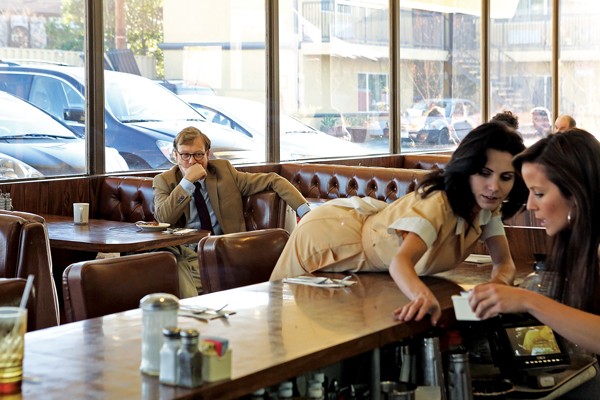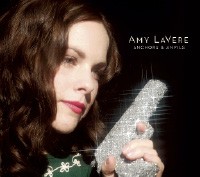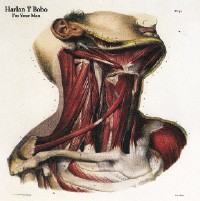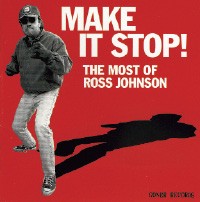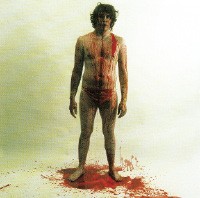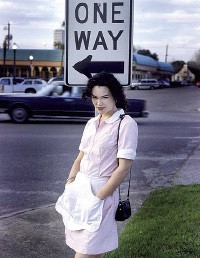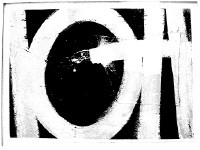Twelves months, thousands of records, five critics. Here’s what our 2007 sounded like:
Chris Herrington:
1. Super Taranta! — Gogol Bordello (Side One Dummy): Hedonistic utopian Eugene Hutz opens Super Taranta! on a leap of faith: “There were never any good old days. They are today. They are tomorrow. It’s a stupid thing we say, cursing tomorrow with sorrow,” the Gogol Bordello frontman spits on “Ultimate,” kicking our collective sense of dread square in the teeth. From there Hutz and his Brooklyn-based “gypsy punk” ensemble embark on an epic journey to re-imagine rock-and-roll via a crosscurrent of Eastern European melodies riding on violin and accordion riffs and to reposition America as the pluralistic, multicultural society it is. How appropriate in this election year that the best rock band in America is a group of immigrants who mock assimilation and taunt our (or anyone else’s) patriotism. How glorious it is that they do so with raucous wit, rootsy party music, and such a magnanimous spirit.
2. Kala —
M.I.A. (XL): Sri Lankan-born world citizen M.I.A. mashes up Western pop (Modern Lovers, Pixies, Duran Duran) with Third World rhythms on this follow-up to her ecstatic debut Arular. Where the earlier record was an intensely pleasurable, beatwise brass-ring grab, Kala is a more rattled, woozy sonic miasma. Fantasizing about a Third World stick-up of First World wealth as she demands (or does she?) that soulja boys the world over toss away their guns; losing her mind in the midst of putting “people on the map who never seen a map”; falling in love on a Darfur tour, rapping joyfully with Aborigine kids: No album this year took in more of the world or did so with such a playful, disorienting rush of ideas.
3. Crazy Ex-Girlfriend — Miranda Lambert (Columbia): A big fan of Miranda Lambert’s 2005 debut, I was initially underwhelmed by its follow-up because the songwriting seemed more formulaic, less personal — a common second-album pitfall. But repeated listens revealed what a formal triumph Crazy Ex-Girlfriend‘s early, spitfire singles are and, more crucially, how much better, more seemingly modest stuff is hidden later. The clinchers are late-album sureshots “Guilty in Here” and “More Like Her” — both piercingly ambivalent about the emotional downside of walking on the wild side.
4. New Wave — Against Me! (Warner): On their major-label debut, this Florida punk band sells out the way Nirvana and Sonic Youth did: with music that’s bigger, bolder, and better than what they made before. This is strident political rock that turns stridency into a good joke (“White People For Peace” — har, har). The band articulates its dissatisfaction, which is achievement enough (indie rock: take note), but never lets righteous, reasonable anger crowd out the empathy, humor, and fierce self-doubt that make their shout-along anthems special.
5. The Real Thing: Words and Music, Vol. 3 — Jill Scott (Hidden Beach): Jill Scott is the reigning poet laureate of neo-soul, a strong, precise lyricist in a genre without many. At its very best, The Real Thing is a sex album simultaneously as clinically carnal as Dirty Mind-era Prince and as warm and mature as Sign ‘O the Times-era Prince. Praising her lover for doing her “as if this year’s harvest depended on it,” Scott’s career peak is funny, weird, and erotic all at once. And she purrs, scats, sighs, and shouts the hell out of it.
6. Neon Bible — Arcade Fire (Merge): I never quite connected with the drama on Arcade Fire’s beloved in some quarters 2004 debut, Funeral, but on Neon Bible this Canadian band of ex-pat Americans take their previously private agonies and anxieties public by naming what they fear: “holy war,” inherited debt, salesmen at the door, a rising tide that could drown us all. Musically, this sweeping, mournful lament is more stirring than engaging, in a manner that I’ve rejected in bigger bands such as U2 or Radiohead. But this music is more intimate, more ragged, more organic. I think the range of voices — male and female — helps considerably. I’ve also decided that, rather than an indie-rock U2, they’re more a middle-class Mekons. Clincher: “The Well and the Lighthouse,” a subtle parable about cultural (read: indie-rock) isolation in which the band chooses the lighthouse and the responsibility that comes with it.
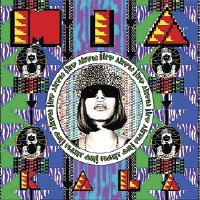
7. Sound of Silver — LCD Soundsystem (DFA/Capitol): The snarky glee of James Murphy’s great early LCD Soundsystem singles (“Beat Connection,” “Losing My Edge”) here blooms into dance-rock as melancholy and beautiful as the best of New Order. No album in 2007 peaked higher than Sound of Silver does with the middle-section trifecta of “North American Scum,” “Someone Great,” and “All My Friends,” the last a song-of-the-year frontrunner that feels universal even as it evokes a club/rave culture I know little of.
8. Alright, Still … — Lily Allen (Capitol): This 2006 British debut got an official stateside release back in January, introducing a grounded, sassy songwriter whose persona is around-the-way-girl (London edition) and who takes a cheerfully dyspeptic tone while negotiating a life plagued by bad credit and worse boyfriends.
9. Turn Out the Lights — The Ponys (Matador): The most purely pleasurable guitar-rock album I heard this year: The dense, echoey sound-over-sense world these Chicago garage-rock grads create on Turn Out the Lights is one of clipped, shivery guitar interplay dancing woozily over a rhythm section that takes Motown on a farewell tour of CBGBs.
10. More Fish and The Big Doe Rehab — Ghostface Killah (Def Jam): The late-2006 leftovers collection More Fish and the late-2007 proper album The Big Doe Rehab fall well short of this Wu-Tang master’s ’06 hip-hop insta-classic, Fishscale. But, in a bad year for hip-hop, nobody made more crucial music than can be found on these combined efforts — deep-soul ghetto and/or crime stories (not the same thing) that are vulgar, funny, and vivid, with an underlying moral gravity.
Honorable Mentions: The Voice of Lightness — Tabu Ley Rochereau (Stern’s Africa); Icky Thump — The White Stripes (Warner); Under the Blacklight — Rilo Kiley (Warner); Graduation — Kanye West (Roc-a-Fella); The Hair, the TV, the Baby, and the Band — Imperial Teen (Merge); La Radiolina — Manu Chao (Nacional/Because); Back to Black — Amy Winehouse (Universal/Republic); Let’s Stay Friends — Les Savy Fav (Frenchkiss); Sirens of the Ditch — Jason Isbell (New West); It’s a Bit Complicated — Art Brut (Downtown).
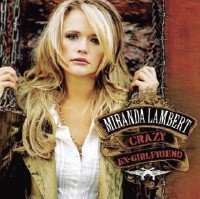
Singles: “All My Friends” — LCD Soundsystem; “Umbrella” — Rihanna featuring Jay-Z; “Beautiful Girls” — Sean Kingston; “The Good Life” — Kanye West featuring T-Pain; “Valerie” — Mark Ronson featuring Amy Winehouse; “Rehab” — Amy Winehouse; “What a Job” — Devin the Dude featuring Snoop Dogg and Andre 3000; “Ticks” — Brad Paisley; “Lip Gloss” — Lil Mama; “Buy U a Drank (Shawty Snappin’)” — T-Pain featuring Yung Joc.
Stephen Deusner:
1. Boxer — The National (Beggars): The blog-rock album of the year, which doesn’t ensure it’s the album of the year. In this case, however, Boxer‘s dark tales of white-collar anonymity, delivered in Matt Berninger’s skewed imagery and resonant baritone, make it immensely relevant as well as endlessly rewarding.
2. The Stage Names — Okkervil River (Jagjaguwar): Roughing up their sound, Okkervil River from Austin continue to prove themselves the darkest portrayers of band life. The moment that closer “John Allyn Smith Sails” turns into a sinister cover of “Sloop John B” is the year’s best plot twist.
3. Ears Will Pop and Eyes Will Blink — Bodies of Water (Thousand Eyes): These four Christian indie kids come across like a ’60s L.A. hippie cult and make music that imagines the Arcade Fire starring in Jesus Christ Superstar, but their curiosity about the nature of God is not an end in itself. Instead, faith is a springboard for the most musically and lyrically ambitious debut of the year.
4. Hissing Fauna, Are You the Destroyer? — Of Montreal (Polyvinyl): Kevin Barnes recorded one half of Hissing Fauna in Norway, where his wife was giving birth to their daughter, and the other half in Athens, Georgia, where the rest of his problems lived. Setting his songs in the real world — a first for him — didn’t diminish the playfulness of the band’s music but only ratcheted up the urgency of his Prince-meets-Beatles hooks.
5. Night Falls Over Kortedala — Jens Lekman (Secretly Canadian): The Swedish crooner Jens Lekman finally lives up to the promise of his exceptional early EPs with an album that is both hilarious and devastating.
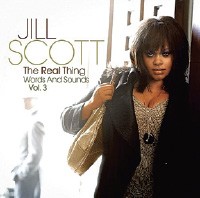
Honorable mentions: Kala — M.I.A. (XL); Sound of Silver — LCD Soundsystem (DFA/Capitol); Mirrored — Battles (Warp); For Emma, Forever Ago — Bon Iver (self-released); Let’s Stay Friends — Les Savy Fav (Frenchkiss).
Andrew Earles:
1. Turn Out the Lights — The Ponys (Matador): The different elements that made previous albums from this Chicago band occasionally great made this album consistently great. Much to their original audience’s chagrin but to my liking, the early garage-rock roots have been totally shed in favor of a consistently catchy hybrid of early Dinosaur Jr., Rough Trade post-punk circa 1980, Disintegration-era Cure, and the Television influence the Ponys have always held close to the chest. They’re also really nice, unpretentious folks, exemplified when they recently played Memphis with …And You Will Know Us By The Trail of Dead. They were the band that didn’t spend pre-performance time holed up in an unnecessarily huge tour bus.
2. Saw a Halo — Mouthus (Load): Often incorrectly classified as a noise band, this Brooklyn duo operates far outside the boundaries of that style. The album-opening “Your Far Church” might be the most haunting song I’ve heard in years, putting to shame compositions by Joanna Newsom, Devendra Banhardt, or any flag-bearer of the awfully named “freak folk” genre.
3. Beyond the Permafrost — Skeletonwitch (Prosthetic/Red): It’s easy for me to get behind a band like Skeletonwitch, which effortlessly cherry-picks the best aspects from 30 years of real metal, starting with Thin Lizzy and going all the way to contemporary black-metal moves. Mastodon sort of managed this trick as well, but the likelihood is slim that the Atlanta band will put out another great album, and this will do just nicely for now.
4. The Flying Nun 25th Anniversary Box Set — Various Artists (Flying Nun): At last, what may be the final word in indie-rock history lessons and all of it courtesy of a country the size of California. Over most of the 1980s and into the early ’90s, New Zealand’s Flying Nun label diligently released the world’s best underground art-pop music in the form of the Chills, the Clean, the Bats, the Verlaines, Straightjacket Fits, the Tall Dwarfs, and many, many others. If you regard the Arcade Fire as groundbreaking, prepare to get floored.
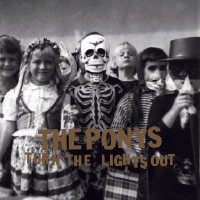
5. The Brit Box — Various Artists (Rhino): Less a history lesson than a highly entertaining collection for the car, The Brit Box provides a thorough introduction to Britain’s ’80s and ’90s contribution to indie and alternative rock forms, covering indie pop, its noisier shoe-gazing cousin, and the eventual worldwide takeover propagated by Brit Pop.
Werner Trieschmann:
1. Under the Blacklight — Rilo Kiley (Warner Bros.): That most fans of this brainy former indie band revolted against this glorious, glittery, and audacious album is probably the best argument for it. But there are others. Such as: Lead singer Jenny Lewis has the best voice in rock. Or that “Dreamworld,” the lone instance where Lewis isn’t on lead, is the greatest Fleetwood Mac song since “Hold On.” Or that this album springs not from the head but from the hips, where all great rock comes from.
2. Crazy Ex-Girlfriend — Miranda Lambert (Columbia): It opens with a shotgun blast at an abusive male and ends with “Easy From Now On,” an unsettled hope for domestic bliss. In between, Miranda Lambert goes twangy and traditional (“Dry Town”) and modern-rock edgy (“Gettin’ Ready”). Every song hits a different pleasure center, with maybe the ballads (“More Like Her” and “Guilty in Here”) being the most surprising for being so naked and raw.
3. Because of the Times — Kings of Leon (RCA): The third album for this band of three brothers and a cousin benefits from ambition and discipline. The songs are longer than on the Kings’ first two albums, and the hooks that were in short supply before are plentiful here. Opening with the mesmerizing seven-minute “Knocked Up,” Because of the Times never lets up from there.
4. Release It to the Sky — Jim Mize (Fat Possum): Jim Mize works as an insurance adjuster out of Conway, Arkansas, which might in part explain why this Fat Possum release was, for all intents and purposes, dumped on the market. Writing his own blues-tinged songs and belting them out with the force of a hurricane, Mize will probably remind you of vintage Bruce Springsteen. Certainly this album has the reach of the Boss at his best.
5. White Chalk — PJ Harvey (Island): The power of PJ Harvey’s bleak and odd little album isn’t apparent on first or even fifth listen. Since she sings in a high warble accompanied by her own rudimentary piano playing (she learned the instrument for this record and it shows), there are many who’ll find White Chalk maddening — not to mention depressing. But it is all of a piece and it is haunting.
Honorable Mentions: Spring Awakening soundtrack — Duncan Sheik and Steven Sater (Drifter’s Church); Traffic and Weather — Fountains of Wayne (Virgin); 5th Gear — Brad Paisley (Arista); A Place To Land — Little Big Town (Equity); Neon Bible —Arcade Fire (Merge).
David Dunlap Jr.:
1. Wagonmaster — Porter Wagoner (Anti-): It wasn’t just the last recording made by a country legend. It also marked the end of an era in country music. I had the pleasure of seeing Porter Wagoner perform this past May at the Grand Ole Opry, and his incredible performance was exemplary of his entire career — a goofy, cornpone persona that often betrayed a deeper, disturbed melancholia. There was a slightly uncomfortable moment when Wagoner forgot Opry announcer Eddie Stubbs’ name, but then he quickly righted himself and tore into a couple of infidelity classics.
2. Comicopera — Robert Wyatt (Domino): Full disclosure: I had a stake in Robert Wyatt’s Comicopera being a great record. A month prior to its release, I had named my second-born after him. When you gamble with the repercussions of naming your child after a Communist paralytic prog-rocker who sings like a porpoise, you can only hope that the honoree’s subsequent output will dispel any feelings of regret by virtue of its genius. Thankfully, Comicopera is, like the man behind it, warm, cynical, and brilliant.
3. Crazy Ex-Girlfriend — Miranda Lambert (Columbia): Nashville Star may not be a better program than American Idol, but it has definitely yielded the most legitimate music star of either program. Crazy Ex-Girlfriend is undeniably a product of the new Nashville, but Miranda Lambert’s powerful delivery and insightful lyrics are evidence that there’s a real live human beneath the layers of Music Row gloss. “Gunpowder and Lead” easily bests the Dixie Chicks’ “Goodbye Earl” as a country music domestic-abuse revenge fantasy.
4. The Western Lands — Gravenhurst (Warp): This Bristol-based outfit has, on its third full-length, perfected a distinctly British hybrid sound that blends pastoral folk with shoe-gazer rock. Band leader Nick Talbot moved to Bristol because the blissful haze of Flying Saucer Attack inspired him, and his band is carrying on FSA’s shimmering sonic legacy.
5. Double Up — R. Kelly (Jive): Without getting into the apocalyptic maelstrom of nonsense that perpetually follows in Kel’s wake, Double Up probably entertained me more than any other release this year. You could write a thesis on the harrowing relationship complexities of “Real Talk,” and yet the song is hilarious enough to warrant a spot on Dr. Demento’s playlist.
Honorable Mentions: 5th Gear — Brad Paisley (Arista Nashville); Person Pitch — Panda Bear (Paw Tracks); Werewolves and Lollipops — Patton Oswalt (Sub Pop); Ire Works — Dillinger Escape Plan (Relapse); The Art of Field Recording (Dust-to-Digital).
